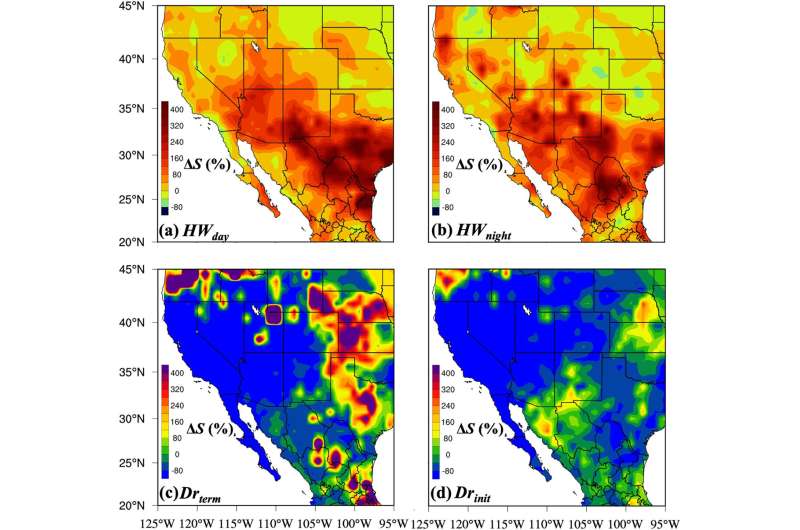The study appears in Geophysical Research Letters.
"Hot droughts will propagate to other parts of the country and have detrimental effects on health, on infrastructure, on daily life," said Enrique Vivoni, a hydrologist at Arizona State University and senior author on the study. As climate change continues, the authors said, more places will likely experience the dry soil conditions that spur and spread hot drought. "We need systems to alert us to hot drought just like we have systems that alert us to hurricanes."
In summer 2023, Southwestern North America weathered an unusually intense hot drought. Using temperature records, rain gauge readings, and a soil moisture dataset from satellite and ground-based measurements, Vivoni and Somnath Mondal, a hydroclimatologist at Northeastern University, set out to characterize the event in the context of previous hot droughts and identify the conditions that set the stage.
For this study, they defined hot drought as any period when at least two weeks of abnormally low rainfall overlapped with at least three straight days of unusually high temperatures.
Even ordinary summers in the region can get brutal, with daytime temperatures since 1980 typically sitting at around 35 to 40 degrees Celsius (95 to 104 degrees Fahrenheit) in some locations. But 2023's hot drought, the duo found, cranked up the heat by as much as 8 degrees Celsius (14 degrees Fahrenheit).
This resulted primarily from weather patterns that suppressed the transfer of atmospheric moisture from the Pacific Ocean into the North American Monsoon, which from July to September typically provides 40 to 80% of the region's annual rainfall. The weak monsoon exacerbated the drought already gripping the U.S. Southwest and Northern Mexico at the time.
"Lack of rainfall can increase heat, which can further intensify the loss of water," noted Mondal. Soil heats up and releases heat more readily when dry, since more of the sun's energy is spent warming the air and earth rather than evaporating soil moisture.
All told, the event reached nearly five times the severity of average hot drought conditions in the region over the past four decades.

Click here to see more...